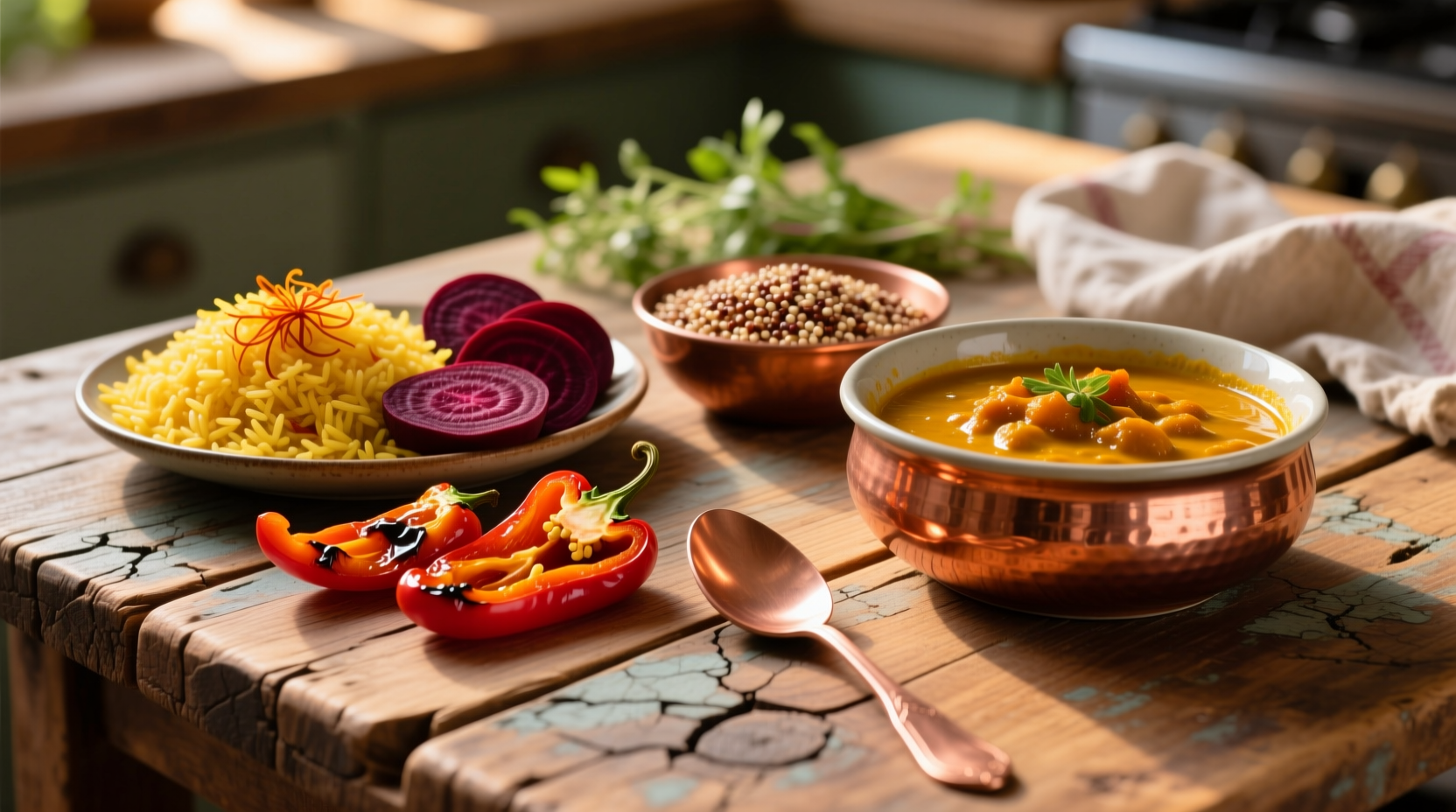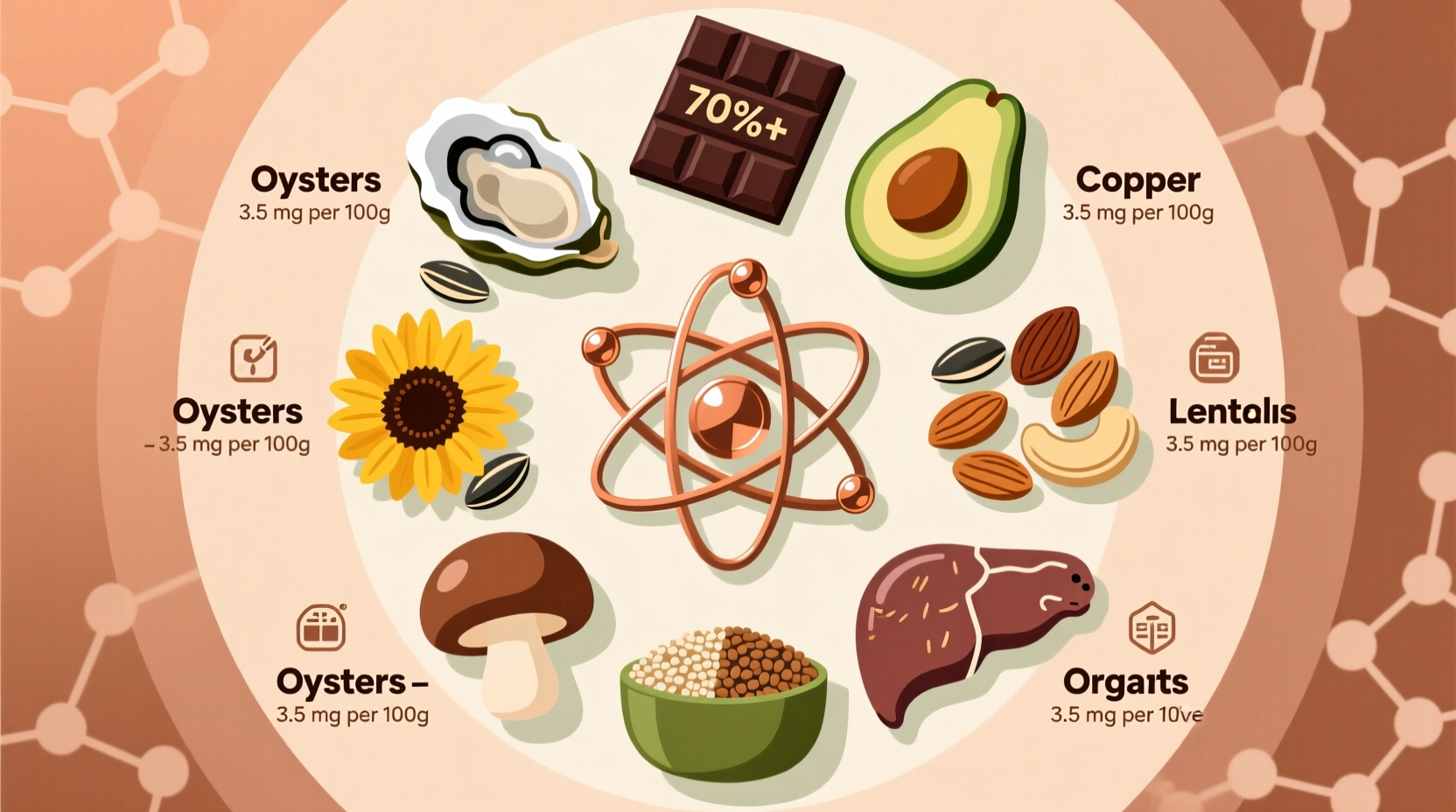Discover the most effective dietary sources of copper to support your body's essential metabolic functions, connective tissue formation, and antioxidant defenses. This guide delivers science-backed information on copper-rich foods with precise measurements, practical incorporation tips, and crucial considerations for different dietary needs.
Why Copper Matters More Than You Think
Copper isn't just another mineral on the nutrition label—it's a critical cofactor for over 50 enzymes that power your body's most vital processes. From energy production to iron metabolism, copper enables functions you likely take for granted. The National Institutes of Health confirms that copper deficiency can lead to anemia, bone abnormalities, and impaired immune function—yet many people don't consume enough.
Unlike some nutrients, your body can't produce copper. You must obtain it through your diet, making food choices crucial for maintaining optimal levels. The Recommended Dietary Allowance (RDA) for adults is 900 micrograms daily, but certain life stages and health conditions may increase your needs.
Your Complete Copper-Rich Foods Reference
Understanding which foods deliver the most bioavailable copper helps you make strategic dietary choices. We've organized these sources by category with verified copper content from the USDA FoodData Central database.
| Food Source | Serving Size | Copper (mg) | % Daily Value |
|---|---|---|---|
| Beef liver | 3 oz | 14.0 | 1,556% |
| Oysters | 3 oz | 4.2 | 467% |
| Dark chocolate (70-85% cacao) | 3 oz | 1.8 | 200% |
| Cashews | 1 oz | 0.6 | 67% |
| Sesame seeds | 1 oz | 0.5 | 56% |
| Lentils (cooked) | 1 cup | 0.4 | 44% |
| Shiitake mushrooms | 1 cup | 0.4 | 44% |
Strategic Copper Consumption: What Most Guides Miss
Simply knowing which foods contain copper isn't enough—you need to understand how to maximize absorption and avoid common pitfalls. Research from the Linus Pauling Institute reveals that copper bioavailability varies significantly based on food combinations and preparation methods.
Maximize absorption: Pair copper-rich plant foods with vitamin C sources to enhance mineral uptake. Try cashew nuts with orange slices or lentil soup with tomatoes. Avoid consuming high-zinc supplements simultaneously with copper-rich meals, as zinc competes for absorption.
Dietary considerations: Vegetarians and vegans need to be particularly strategic, as plant-based copper sources generally have lower bioavailability than animal sources. The Vegetarian Nutrition Dietetic Practice Group recommends increasing plant-based copper intake by 30-50% to compensate for reduced absorption.

Copper Needs Across Life Stages
Your copper requirements aren't static—they change based on age, gender, and life circumstances. The National Academy of Medicine has established these official guidelines:
- Adults (19+ years): 900 mcg daily
- Pregnant women: 1,000 mcg daily
- Nursing mothers: 1,300 mcg daily
- Children (9-13 years): 700 mcg daily
Special considerations apply for individuals with certain health conditions. Those with celiac disease or Crohn's disease often require higher copper intake due to malabsorption issues. Consult your healthcare provider if you have digestive disorders affecting nutrient absorption.
Practical Integration: Adding Copper-Rich Foods to Your Daily Routine
You don't need dramatic dietary changes to boost your copper intake. These simple strategies work with your existing eating patterns:
- Breakfast boost: Sprinkle sesame seeds on your morning avocado toast or add cashews to oatmeal
- Lunch enhancement: Include lentils in salads or soups for a copper-rich protein source
- Smart snacking: Choose dark chocolate (70%+ cacao) instead of milk chocolate for significantly higher copper content
- Dinner upgrade: Prepare shiitake mushroom stir-fry or incorporate shellfish into weekly meals
For plant-based eaters: Create a daily copper-boosting trail mix with cashews, sunflower seeds, and dried apricots. Just one-quarter cup provides nearly half your daily copper needs.
Avoiding Copper Imbalance: Important Considerations
While copper deficiency is concerning, excessive copper intake presents risks too. The Tolerable Upper Intake Level (UL) for adults is 10,000 mcg (10 mg) daily. Chronic excess can cause nausea, vomiting, and liver damage.
Be cautious with copper cookware, especially when preparing acidic foods like tomato sauce, as this can leach copper into your food. The FDA recommends avoiding copper cookware for acidic foods unless it's properly lined.
If you have Wilson's disease (a rare genetic disorder affecting copper metabolism), you'll need to strictly limit copper-rich foods. Consult your healthcare provider for personalized guidance.
Recognizing Copper Deficiency: Subtle Signs Worth Noticing
Copper deficiency often flies under the radar because symptoms mimic other conditions. Watch for these less obvious indicators:
- Persistent fatigue despite adequate sleep
- Frequent bone fractures or osteoporosis
- Pale skin and premature graying of hair
- Unusual sensitivity to cold temperatures
- Neurological symptoms like numbness or difficulty walking
If you suspect copper deficiency, consult a healthcare professional for proper testing rather than self-supplementing, as copper imbalance can have serious health consequences.











 浙公网安备
33010002000092号
浙公网安备
33010002000092号 浙B2-20120091-4
浙B2-20120091-4